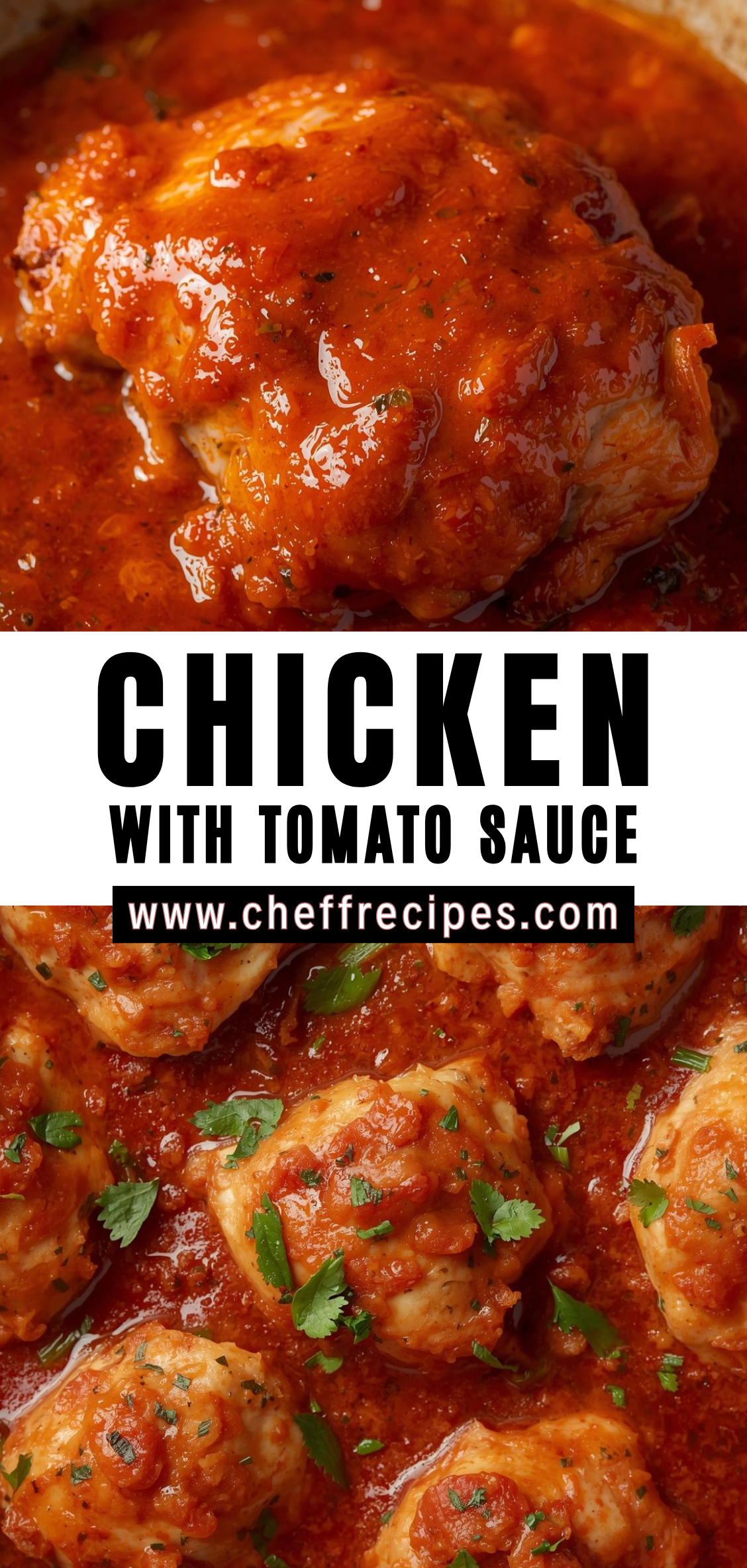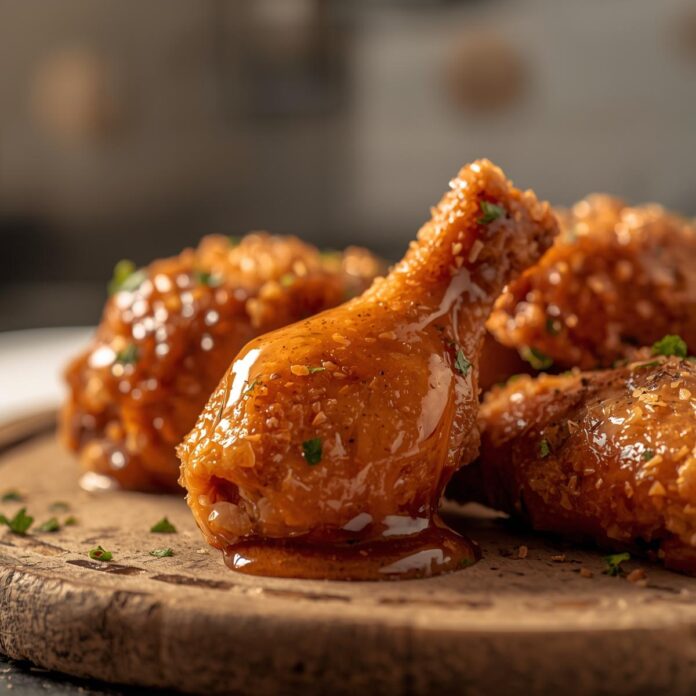Chicken with tomato sauce is one of those quintessential dishes that transcends cultural boundaries, finding a place in kitchens around the world. At first glance, it might seem deceptively simple—a combination of tender chicken and a vibrant, tangy tomato-based sauce—but beneath its surface lies a rich tapestry of history, culinary technique, and sensory delight. The dish is celebrated not only for its comforting flavors but also for its adaptability, nutritional value, and the myriad ways it can be customized to suit local tastes and individual preferences.

Historically, the pairing of poultry with tomatoes reflects an intersection of agricultural development, trade, and cultural evolution. Chicken, long prized for its lean protein and versatility, has been a staple in human diets across continents for centuries. Tomatoes, on the other hand, are native to the Americas and were introduced to Europe only in the 16th century. Initially met with suspicion, tomatoes gradually gained acceptance and became central to Mediterranean cooking. The marriage of these two ingredients exemplifies how culinary traditions evolve, embracing new flavors while maintaining classic techniques.
Beyond its historical context, chicken with tomato sauce holds an important place in the daily lives of people. It is a dish that can be found on the tables of busy families seeking nutritious meals, as well as in the menus of gourmet restaurants where chefs experiment with modern interpretations and artistic presentations. Its flavors are familiar yet dynamic: the natural sweetness of tomatoes is balanced by the savory depth of cooked chicken, and the addition of herbs and spices elevates the dish to something greater than the sum of its parts.
From a nutritional standpoint, chicken with tomato sauce offers a well-rounded combination of protein, vitamins, and minerals. Tomatoes contribute lycopene, an antioxidant associated with various health benefits, while chicken provides essential amino acids critical for growth and repair. The dish’s versatility allows it to be paired with a range of accompaniments, from pasta and rice to crusty bread or roasted vegetables, making it both practical and satisfying.
Culinary enthusiasts also appreciate the creative possibilities inherent in chicken with tomato sauce. The sauce itself can be simple, relying on basic ingredients such as garlic, onions, and olive oil, or it can be layered with complex flavors, incorporating wine, cream, or a medley of fresh herbs. Cooking methods vary as well: it can be simmered gently on the stove, baked in the oven, or even prepared in a slow cooker for a rich, concentrated flavor. Each technique brings out different qualities in the chicken and sauce, allowing cooks to tailor the dish to their desired taste and texture.
In exploring chicken with tomato sauce, one is not merely studying a recipe; one is engaging with centuries of culinary history, regional variations, and personal creativity. This dish serves as a lens through which we can examine the interplay of culture, flavor, nutrition, and innovation in cooking. It is a testament to the enduring appeal of simple, high-quality ingredients combined with thoughtful technique, producing a dish that is comforting, nourishing, and endlessly adaptable.
As we delve deeper into the art and science of chicken with tomato sauce, this discussion will cover its origins, regional variations, preparation techniques, flavor profiles, nutritional benefits, and creative adaptations. By the end, it will be clear why this seemingly humble dish has maintained its popularity across generations and geographies, continuing to inspire both home cooks and professional chefs alike.
1. Introduction
-
Already drafted above.
-
Expand to include:
-
The global appeal of chicken with tomato sauce.
-
Its place in home cooking vs. gourmet cuisine.
-
Brief mention of nutritional benefits.
-
A hook to engage readers (history, flavors, versatility).
-
2. History and Origins
Purpose: Trace the cultural and culinary evolution of the dish.
Content:
-
Origins of chicken as a domesticated poultry and its culinary uses globally.
-
History of tomatoes: from native American plants to European kitchens.
-
How tomatoes and chicken were first combined in different cultures.
-
Regional variations emerging over time (Mediterranean, Latin American, Asian adaptations).
-
Historical recipes, if documented, to show evolution.
Style: Storytelling with factual details, citing historical and culinary context.
3. Key Ingredients
Purpose: Detail each main and secondary ingredient, including optional enhancements.
Content:
-
Chicken: types, cuts, and their effects on flavor and texture.
-
Tomatoes: fresh vs. canned, varieties, ripeness, and flavor profiles.
-
Supporting ingredients: onions, garlic, herbs (basil, oregano), spices, olive oil, wine, stock.
-
Optional ingredients: cream, chili, bell peppers, mushrooms, etc.
-
Tips for selecting high-quality ingredients.
Style: Informative, slightly instructional, with sensory descriptions.
4. Preparation Techniques
Purpose: Explain how the dish is prepared in detail, including variations.
Content:
-
Basic cooking methods: stove-top simmering, oven-baking, slow cooking, pressure cooking.
-
Step-by-step guide to preparing chicken with tomato sauce.
-
Tips for achieving tender chicken and rich sauce.
-
Techniques for balancing acidity, sweetness, and seasoning.
-
How different techniques affect texture and flavor.
-
Optional creative twists (e.g., adding wine, roasting tomatoes first).
Style: Instructional with explanatory notes on why each step matters. Include sensory cues (aroma, color, texture).
5. Regional Variations and Recipes
Purpose: Highlight global adaptations.
Content:
-
Italian-style: herbs, olive oil, sometimes with pasta.
-
Spanish-style: sofrito base, paprika, sometimes olives.
-
Latin American-style: cumin, chili, bell peppers.
-
Asian-style adaptations: soy sauce, ginger, chili, coconut milk.
-
Comparison of cooking methods, ingredients, and flavor profiles.
Style: Comparative, engaging, culturally informative.
6. Nutritional Benefits
Purpose: Discuss the health aspects of the dish.
Content:
-
Protein content from chicken.
-
Vitamins and antioxidants from tomatoes.
-
Impact of cooking methods on nutrient retention.
-
Dietary variations: low-fat, low-sodium, keto, paleo adaptations.
-
Portioning and pairing with healthy sides.
Style: Analytical but readable, with practical advice.
7. Serving Suggestions and Pairings
Purpose: Show versatility in presentation.
Content:
-
Common sides: pasta, rice, bread, roasted vegetables, mashed potatoes.
-
Garnishing tips to enhance flavor and appearance.
-
Presentation ideas for casual vs. formal dining.
Style: Practical and creative, with sensory descriptions.
8. Creative Variations
Purpose: Inspire experimentation.
Content:
-
Fusion adaptations: Asian, Mexican, or Mediterranean twists.
-
Vegetarian or plant-based “chicken” alternatives.
-
Using different types of tomatoes or sauces (salsa, passata, sun-dried).
-
Innovative plating or cooking methods.
Style: Inspirational, encouraging culinary creativity.
9. Common Mistakes and Tips
Purpose: Help readers avoid pitfalls.
Content:
-
Overcooking or undercooking chicken.
-
Sauce too acidic, watery, or bland.
-
Balancing flavors and textures.
-
Tips for reheating and storing leftovers.
Style: Concise, problem-solving, helpful.
10. Conclusion
Purpose: Wrap up and reinforce the dish’s significance.
Content:
-
Summarize versatility, flavor, and nutritional value.
-
Reflect on cultural and culinary importance.
-
Encourage readers to try variations and make the dish their own.
Style: Reflective and motivating, leaving a lasting impression.
Chicken with Tomato Sauce
Chicken with tomato sauce is one of those quintessential dishes that transcends cultural boundaries, finding a place in kitchens around the world. At first glance, it might seem deceptively simple—a combination of tender chicken and a vibrant, tangy tomato-based sauce—but beneath its surface lies a rich tapestry of history, culinary technique, and sensory delight. The dish is celebrated not only for its comforting flavors but also for its adaptability, nutritional value, and the myriad ways it can be customized to suit local tastes and individual preferences.
Ingredients
- 4 boneless, skinless chicken breasts (or thighs if preferred)
- 2 tablespoons olive oil
- 1 medium onion, finely chopped
- 3 cloves garlic, minced
- 1 can (14 oz / 400 g) crushed tomatoes
- 1 teaspoon tomato paste (optional, for deeper flavor)
- 1 teaspoon dried oregano
- 1 teaspoon dried basil (or a handful of fresh basil leaves, chopped)
- ½ teaspoon red pepper flakes (optional, for a slight kick)
- Salt and black pepper to taste
- ½ cup chicken broth or water
- 1 teaspoon sugar (optional, to balance acidity)
- Fresh parsley, chopped (for garnish)
Instructions
- Prepare the chicken: Pat the chicken dry and season both sides with salt and pepper.
- Sear the chicken: Heat olive oil in a large skillet over medium-high heat. Add the chicken and cook for 3–4 minutes per side until golden brown. Remove chicken and set aside.
- Cook the aromatics: In the same skillet, add onion and cook until softened, about 3–4 minutes. Add garlic and cook for another 30 seconds until fragrant.
- Add tomatoes and seasonings: Stir in crushed tomatoes, tomato paste, oregano, basil, red pepper flakes, and sugar (if using). Add chicken broth or water to loosen the sauce if needed. Season with salt and pepper.
- Simmer the chicken: Return the chicken to the skillet, spoon some sauce over the top, reduce heat to low, and cover. Simmer for 15–20 minutes, or until chicken is cooked through (internal temperature 165°F / 74°C).
- Finish and serve: Taste the sauce and adjust seasoning if needed. Garnish with chopped parsley before serving. Serve over rice, pasta, or with crusty bread.
Notes
- Chicken thighs work well for a juicier, more flavorful result.
- For a thicker sauce, simmer uncovered for an extra 5–10 minutes.
- Add a splash of red wine for extra depth of flavor.
- This recipe can be doubled easily for larger families or meal prep.



